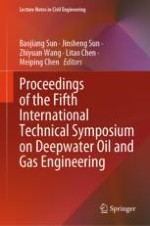2024 | OriginalPaper | Chapter
Study on Stability of Horizontal Wellbore Drilled in Marine Natural Gas Hydrate Reservoir
Authors : Xiansi Wang, Zhiyuan Wang, Zhenggang Gong, Weiqi Fu, Peng Liu, Jianbo Zhang
Published in: Proceedings of the Fifth International Technical Symposium on Deepwater Oil and Gas Engineering
Publisher: Springer Nature Singapore
Activate our intelligent search to find suitable subject content or patents.
Select sections of text to find matching patents with Artificial Intelligence. powered by
Select sections of text to find additional relevant content using AI-assisted search. powered by
